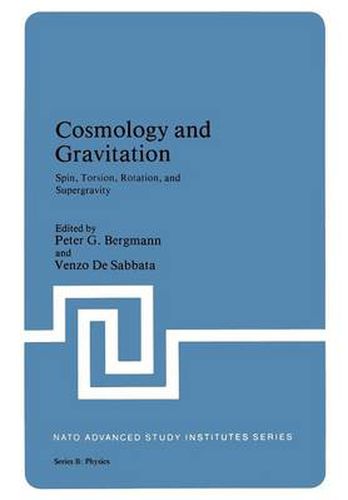Readings Newsletter
Become a Readings Member to make your shopping experience even easier.
Sign in or sign up for free!
You’re not far away from qualifying for FREE standard shipping within Australia
You’ve qualified for FREE standard shipping within Australia
The cart is loading…






This title is printed to order. This book may have been self-published. If so, we cannot guarantee the quality of the content. In the main most books will have gone through the editing process however some may not. We therefore suggest that you be aware of this before ordering this book. If in doubt check either the author or publisher’s details as we are unable to accept any returns unless they are faulty. Please contact us if you have any questions.
For the Sixth Course of the International School of Cosmology and Gravitation of the Ettore Maj orana Centre for Scientific Cul- ture we choose as the principal topics torsion and supergravity, because in our opinion it is one of the principal tasks of today’s theoretical physics to attempt to link together the theory of ele- mentary particles and general relativity. Our aim was to delineate the present status of the principal efforts directed toward this end, and to explore possible directions of work in the near future. Efforts to incorporate spin as a dynamic variable into the foundations of the theory of gravitation were poineered by E. Cartan, whose contributions to this problem go back half a century. Accord- ing to A. Trautman this so-called Einstein-Cartan theory is the sim- plest and most natural modification of Einstein’s 1916 theory. F. Hehl has contributed a very detailed and comprehensive analysis of this topic, original view of non-Riemannian space-time. Characteristic of Einstein-Cartan theories is the enrichment of Riemannian geometry by torsion, the non-symmetric part of the otherwise metric-compatible affine connection. Torsion has a impact on the theory of elementary particles. According to V. de Sabbata, weak interactions can be based on the Einstein-Cartan geometry, in that the Lagrangian describing weak interactions and torsion inter– action possess analogous structures, leading to a unification of weak and gravitational forces.
$9.00 standard shipping within Australia
FREE standard shipping within Australia for orders over $100.00
Express & International shipping calculated at checkout
This title is printed to order. This book may have been self-published. If so, we cannot guarantee the quality of the content. In the main most books will have gone through the editing process however some may not. We therefore suggest that you be aware of this before ordering this book. If in doubt check either the author or publisher’s details as we are unable to accept any returns unless they are faulty. Please contact us if you have any questions.
For the Sixth Course of the International School of Cosmology and Gravitation of the Ettore Maj orana Centre for Scientific Cul- ture we choose as the principal topics torsion and supergravity, because in our opinion it is one of the principal tasks of today’s theoretical physics to attempt to link together the theory of ele- mentary particles and general relativity. Our aim was to delineate the present status of the principal efforts directed toward this end, and to explore possible directions of work in the near future. Efforts to incorporate spin as a dynamic variable into the foundations of the theory of gravitation were poineered by E. Cartan, whose contributions to this problem go back half a century. Accord- ing to A. Trautman this so-called Einstein-Cartan theory is the sim- plest and most natural modification of Einstein’s 1916 theory. F. Hehl has contributed a very detailed and comprehensive analysis of this topic, original view of non-Riemannian space-time. Characteristic of Einstein-Cartan theories is the enrichment of Riemannian geometry by torsion, the non-symmetric part of the otherwise metric-compatible affine connection. Torsion has a impact on the theory of elementary particles. According to V. de Sabbata, weak interactions can be based on the Einstein-Cartan geometry, in that the Lagrangian describing weak interactions and torsion inter– action possess analogous structures, leading to a unification of weak and gravitational forces.